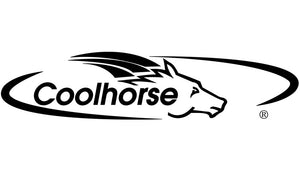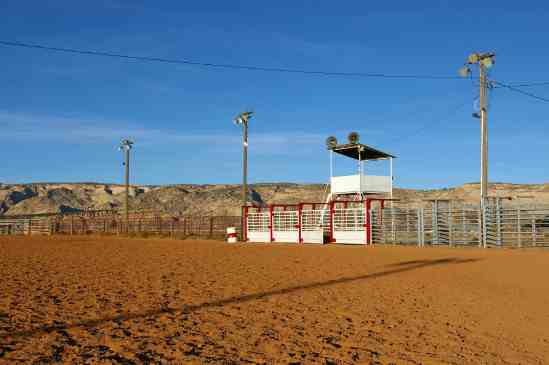Maintaining a horse arena requires a thorough understanding of its elements, their composition, and the upkeep routine necessary to ensure the safety and performance of riders and their horses. Stable managers and horse owners responsible for their own arenas can benefit from this guide on everything to know about maintaining your horse arena.
Even if you’re an expert rider, there are many subtleties to arena care that require examination from ground level. On your feet, you’re able to spot conditions you might not notice when you’re mounted on horseback. Maintenance requires knowing how to care for the distinct layers of an arena, effective methods for mixing and maintaining footing, and what adjustments to make according to weather conditions.
Understanding Arena Layers
What’s under the sand is just as important as what’s in it. A horse arena comprises three main layers, each serving a critical role in its overall functionality.
- Sub-base: This is the lowest layer, usually consisting of compacted soil. It provides stability to the layers above.
- Base: This layer includes compacted materials such as crushed stone, creating a firm foundation that supports the footing. It also plays a role in proper drainage.
- Footing: The footing is the topmost layer that spectators see and that horses feel underfoot. It is typically made from a mixture of sand, clay, rubber, and/or textile materials designed to provide cushioning and traction.
These layers must work in harmony to ensure a safe and effective riding surface. It’s crucial to periodically check the integrity of each layer, as settling or erosion can compromise the arena’s stability and safety.
The Importance of Mixing and Maintaining Footing

Maintaining the footing layer in a horse arena is critical for horse and rider safety and performance. Properly maintained footing prevents injuries by offering uniform cushioning and traction, which are critical for the horse’s joints and the rider’s balance.
Conversely, poorly maintained footing can lead to uneven surfaces, creating a risk of trips, falls, and serious injuries. It can also cause excessive dust in dry climates or become slippery and muddy in wet conditions, both scenarios compromising the safety and comfort of use.
Different climates necessitate tailored maintenance strategies; for instance, arenas in dry areas might need regular watering to prevent the footing from becoming too loose and dusty.
By contrast, those in wetter climates require adequate drainage and possibly the incorporation of materials that provide stability and prevent oversaturation. Regularly refreshing the footing with appropriate additives helps maintain its quality and functionality, ensuring a safe environment that meets the requirements of riding activities across diverse weather conditions.
That said, there are additional factors that are important to keeping arena footing in top condition.
- Raking, Dragging, and Plowing: Regularly rake and drag the footing to prevent compacting and ensure an even surface. Use specialized draggers designed for horse arenas to achieve the best results.
- Watering: Proper moisture levels are essential for reducing dust and maintaining the footing’s resilience. Water your arena as needed to maintain optimal moisture content, like the way you’d water your lawn in the summer. A good drenching two times a week is better than a light sprinkling more often.
- Check Depth: Regularly measure the footing depth to ensure it remains consistent across the arena. Adjustments may be necessary to maintain the correct depth.
- Control Dust and Weeds: Avoid using harmful herbicides for weed control. Natural solutions such as vinegar can effectively manage weeds without risking the health of horses or riders. Maintaining proper moisture levels helps control dust and reduce the risk of respiratory issues for horses and their riders.
- Turn Over the Arena: Annually “flipping” your arena to the base helps refresh the footing and prevent compaction. This process ensures a consistent surface performance.
Remove Organic Matter Promptly
Manure can be slippery when freshly deposited, and both manure and other organic materials can decompose, altering the footing’s composition and introducing unwanted excess moisture. Remove organic matter from the arena promptly to maintain the quality and consistency of the footing.
Watch the Weather and Adjust Dragging and Watering Accordingly
Weather conditions significantly impact arena maintenance routines. Drag your arena when you know rain is coming to minimize hoof impressions and ruts that could capture and hold rainwater. Excessive rain can lead to waterlogging, requiring drainage efforts and reduced watering.
During dry periods, increase watering frequency to maintain footing moisture and reduce dust. Adapt your maintenance practices based on current and anticipated weather conditions to keep your arena in optimal shape year-round. Water sprinklers or water wagons are great tools for evenly distributing water on your arena.
Equip Your Arena

Proper equipment is necessary for effective arena maintenance. Horse arena equipment encompasses a range of tools designed specifically for the task.
Draggers, Plows, and Groomers: These pieces of essential arena equipment are necessary for maintaining an even and aerated footing surface. Draggers take care of hoofprints and ruts, while groomers can refine the surface after dragging and allow you to incorporate additives.
It’s critically important not to disturb the base when dragging and grooming. The goal is to maintain a level, even surface, and support from the base is the cornerstone of safe and stable arena footing. Adjustable equipment allows you to set the dragger or groomer at an appropriate height and avoid digging into the base or creating ruts that may be difficult to eradicate.
Signage and Barriers: Clear signage delineates areas within and outside the arena and barns to keep unauthorized persons out of aisles in stables and away from paddocks. This signage will also keep visitors from feeding horses and interfering with riders.
Chutes and Practice Dummies: These items assist with specialized rodeo training. Ensure these components are correctly installed and maintained to enhance safety and training effectiveness.
Investing in the right tools and equipment facilitates efficient maintenance routines and contributes significantly to the longevity and usability of your horse arena. High traffic area where sleds are pulled or roping and riding takes place will require extra attention.
Maintaining a horse arena is a complex but essential task that requires understanding, diligence, and the right tools. Consistent maintenance not only extends the life of your arena but also ensures the well-being and performance of its users. Prioritizing the care of your horse arena is an investment in the safety and satisfaction of all who use it.

